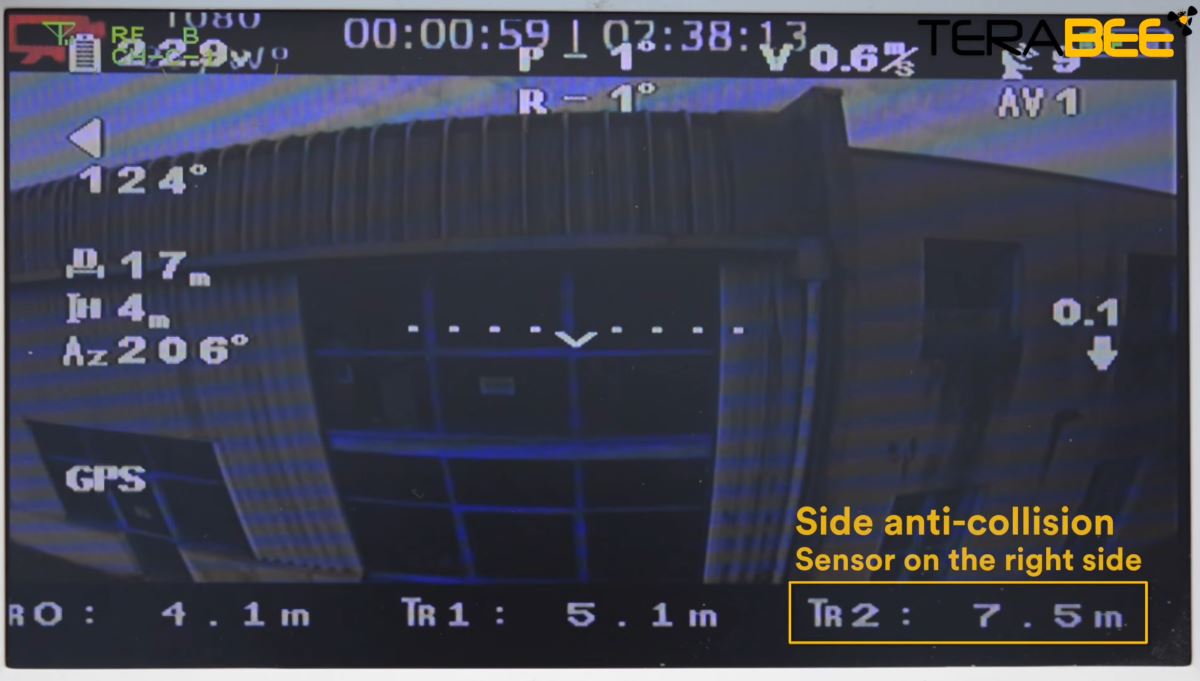As the drone industry keeps growing, the need to develop safety systems for those drones becomes more of a priority for operators. TeraBee brings us one step further closer to ensuring the skies are and will remain safe with the new TeraRanger Inspection Drone Kit.
TeraBee’s TeraRanger Inspection Drone Kit offers drone users a higher level of security by using the small, lightweight (8g) and high performance TeraRanger One Type B* distance sensor(s) and a small electronics board called TeraRanger Distance On-Screen-Display. “TeraRanger distance sensors are optimized for use in lightweight mobile robotics; and drones are one of the main applications we support. Our sensors are frequently used as a precision altimeter to give relative distance-to-ground data and for collision avoidance around the perimeter of the drone. By displaying the distance data to the live video feed, we can give pilots valuable information and an added level of security”, said Terabee’s Commercial Manager, Greg Watts.Terabee is a French company, founded in 2012. It started as a drone services company leading the way in new techniques for mapping, inspection, photogrammetry and more. Later, working in collaboration with CERN (European Organization for Nuclear Research) to use drones for fully autonomous inspection and 3D radiation mapping, the TeraRanger brand of distance sensors was formed and brought to the market in 2014.The TeraRanger One distance sensors are based on the infrared Time-of-Flight (ToF) technology, which is much faster than ultrasound, and smaller and lighter than laser-based systems. They are used to detect potential obstacles and, with help of the electronics board, provide fast distance-to-target data streamed directly to the drone's live video feed. The information displayed on the screen can be adjusted with a free configuration tool that comes with the package. It allows you to position the data anywhere you want on the screen, and set up threshold values that, if reached, flash the distance data, warning you of potential obstacles.“We were in fact our own customer for this, using the solution to support a project high in the French alps where barometric altitude data was insufficient and where fast, reliable, distance-to-ground information was needed. We also placed a sensor on the gimbal, along with the camera, so that we could maintain a consistent distance from the infrastructure we were inspecting. By taking the images at the same distance, the post-mission data processing becomes much easier to handle and is a real advantage for photogrammetry projects.”, Greg Watts explained.Interestingly, DJI, a Chinese drone manufacturer, has already invented a similar, but more expensive, system called Guidance. It is a visual sensing system with integrated visual cameras and ultrasonic sensors, that reads the environment around it and automatically avoids collisions, even at high speeds. Guidance costs 999$ and is fully compatible with the DJI Matrice series flight platforms such as the DJI Matrice 100, which costs 3,299$. On the other hand, TeraRanger Inspection Drone Kit is compatible with every drone, and is offered in two less expensive kits. One with a single sensor, another one with three sensors, but both come with the TeraRanger Distance OSD and the necessary connection cables. You can use up to eight sensors simultaneously, which you can buy separately, and add them as you see fit. Each extra sensor (Type B) represent an additional cost, and the price depends on your preference of design.*The TeraRanger Inspection Drone Kit comes with TeraRanger One Type B distance sensors. TeraBee has a Type A distance sensor too, but informs a Type B distance sensor is better for outdoors, as it is more stable in direct sunlight. However, they do say the performance on both is very similar.Subscribe
The information you submit will be stored and used to communicate with you about your interest in Commercial UAV News. To understand more about how we use and store information, please refer to our privacy policy.
December 28, 2016
Avoid Collisions with the TeraRanger Inspection Drone Kit




.png.small.400x400.png)











Comments